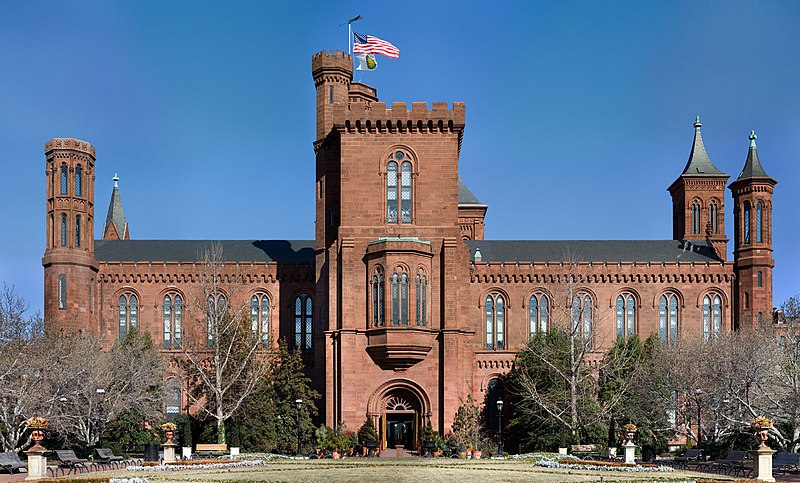- 14 3402-5578
- Rua Hygino Muzy Filho, 737, MARÍLIA - SP
- contato@latinoobservatory.org
 Wikipedia:Image:Smithsonian_Building.jpg - released to public domain
Wikipedia:Image:Smithsonian_Building.jpg - released to public domain
Democracy Now, a U.S.-based nonprofit organization, approaches from an article with interviews a controversy surrounding the plans for the construction of the National Museum of Latin America in the United States. The discussion revolves around the representation of Latinos in the Smithsonian Institution’s current exhibit, titled “¡Presente! A Latino History of the United States”, as well as pausing in a future exhibition on the Latino civil rights movement of the 1960s in favor of an exhibition on Latin and salsa music.
The current exhibition, “¡Presente!”, seeks to highlight the complex Latino history in the United States, addressing topics such as the integration of Latinos after the U.S. War with Mexico, the acquisition of Puerto Rico by the United States, and how U.S. foreign and economic policy affected Latino immigration. However, the exhibition was the target of criticism from conservative political leaders, who claimed that it had a “Marxist” approach to history.
Historians Felipe Hinojosa and Johanna Fernández, hired to develop the exhibition on the Latino civil rights movement of the 1960s, expressed concern about the pause in the exhibition and the possible lack of understanding of the movement’s historical importance. In the aforementioned publication, they argue that the struggle for Latino civil rights is an essential part of American history and that telling that story in an authentic and comprehensive way is key.
“One vocal critic of the museum’s exhibition has been the Cuban-born Congressmember Mario Díaz-Balart, who threatened in July to block funding for the museum — he serves on the House Committee on Appropriations — and later backed down on his threat after he met with Jorge Zamanillo and Lonnie Bunch, the secretary of the overall Smithsonian Institution. After the meeting, the museum changed parts of the exhibit featuring a foam raft used by Cuban refugees to flee the country. The original exhibition text said the refugees were, quote, ‘escaping Cuba’s economic crisis’. In July, the text was changed to add a reference to Fidel Castro and, quote, ‘Cuba’s dictatorship, political repression, and economic crisis’, unquote, according to the publication.
The controversy also raises questions about the representation of different political perspectives and the complexity of Latino history in the United States. In addition, the discussion about the construction of the National Museum of Latin America and its funding is highlighted as an important component of this controversy.
According to the article, “The controversy comes as the Smithsonian is seeking to raise enough money to build the museum, which will cost an estimated $800 million. The New York Times reports $58 million have been raised so far”.
Felipe Hinojosa, a prominent professor of history at Baylor University in Texas, stated in the interview, “first of all, I would say a lot of political leaders are often disconnected from the grassroots community. They don’t understand what the community is asking for. I’ve been in the classroom for over 20 years. Students are wanting more of this history, wanting to better understand how Latinos have shaped Texas politics, have shaped the history of the United States — and not just Latino students, by the way. I’m talking to students of all backgrounds that are very invested in telling a bigger story of American history and having a broader understanding of it”.
Johanna Fernandez, another prominent associate
professor of history at the City University of New York's Baruch College,
states in the interview that “These conservatives are using fear to essentially
push through their agenda”, […] “who warns that the rising wave of censorship
throughout the U.S. could be a ‘repeat of the Red Scare’.”











